#James Basire
Photo






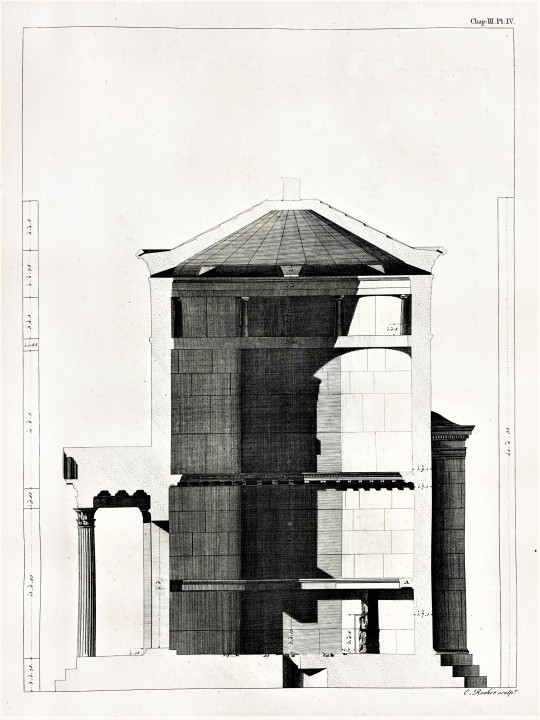
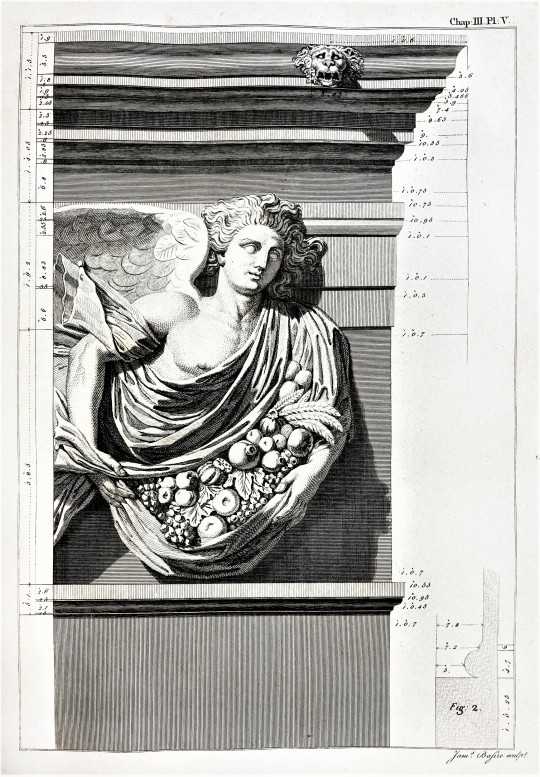


Decorative Sunday!
These beautiful engravings are from the first volume of The Antiquities of Athens by Scottish archeologist, architect and artist, James Stuart (1713-1788) and British artist and architect, Nicholas Revett (1720-1804), printed in London by John Haberkorn in 1762.
The Tower of the Winds is an octagonal marble clock tower in the Roman Agora of Athens. It was designed by Andronicus of Cyrrhus around 50 BC. It was a functional structure that contained sundials, a waterclock, and a wind vane. It is an ancient equivalent of a modern day meteorological station. The building became more widely known outside of Greece because of Stuart and Revett, who were among the first to document the antiquities and monuments of Athens in great architectural detail. Their work is noted for fueling the Greek Revival, an architectural movement in northern Europe, the United States, and Canada in the late 18th and early 19th centuries. When the first volume was published they had more than five hundred subscribers, mostly architects and builders.
The engravings were made by the British engraver James Basire (1730-1802), who specialized in prints depicting architecture. Artwork by Basire is held in museums throughout the world. He is also known for having the young William Blake (1757-1827) as an apprentice for seven years.
The well known artist William Hogarth (1697-1764) published a satirical print called The Five Orders of Periwigs in which he classifies the ridiculous wigs that were in fashion at the time into “orders” with greatly detailed measurements. This was a direct satire of Stuart and Revett’s work and similar work of which he said “It requires nor more skill to take the dimensions of a pillar or cornice, than to measure a square box.”
The tower’s frieze depicts the eight winds in bas-relief represented figuratively as gods, the Anemoi: Zephyrus, the West wind; Boreas, the North wind; Kaikias, the North East wind; Apeliotes, the East wind; Eurus, the South East wind; Notus, the South wind; Lips, the South West wind; and Sciron, the North West wind.
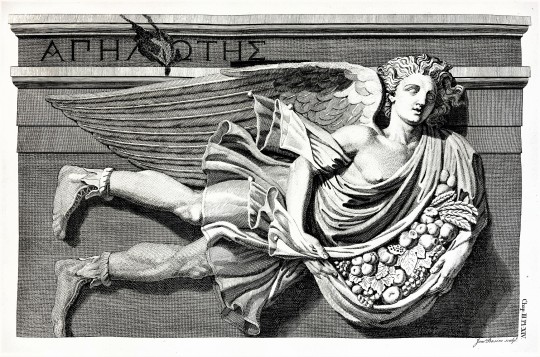
Apeliotes, The East Wind.
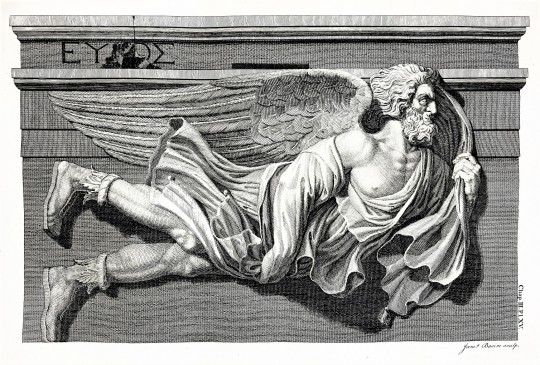
Eurus, The South East Wind.

Notos, The South Wind.

Lips, The South West Wind.

Sciron, The North West Wind.
View more Decorative Sunday posts.
-Teddy, Special Collections Graduate Intern
#Decorative Sunday#decorate plates#decorative arts#tower of the winds#athens#greek mythology#greek architecture#architecture#the antiquities of athens#james stuart#nicholas revett#James Basire#Andronicus of Cyrrhus#John Haberkorn#William hogarth#weathervanes#Engravings#18th century#greek sculpture#roman mythology#roman architecture#archeology#Teddy#Roman Agora#athens greece#Ancient Greece
102 notes
·
View notes
Text


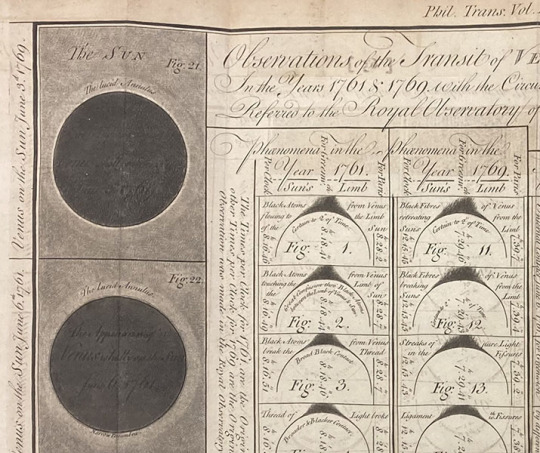


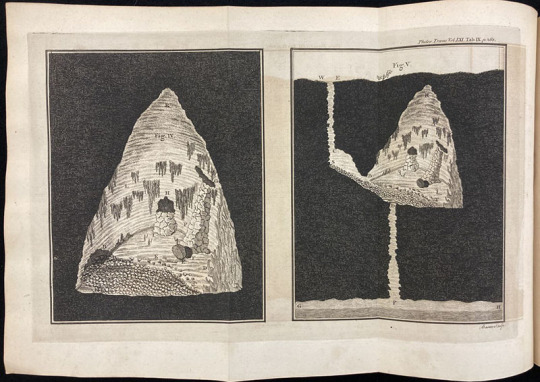

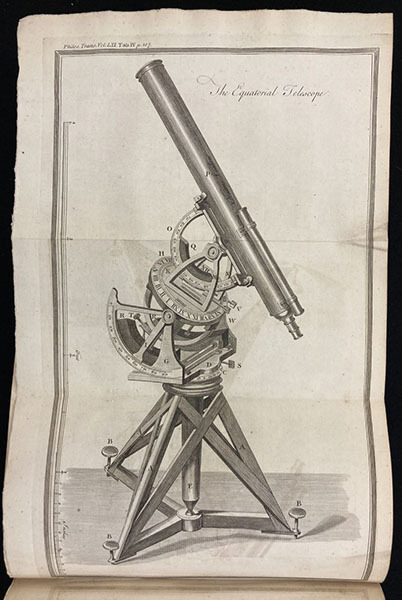


James Basire I – Scientist of the Day
James Basire I, an English engraver, was born Oct. 6, 1730.
read more...
#James Basire I#engraving#scientific illustration#histsci#histSTM#18 century#history of science#Ashworth#Scientist of the Day
16 notes
·
View notes
Text

James Basire the Elder, The Encampment of King Henry VIII at Marquison, July 1549, 19788, etching based on a painting by Samuel Hieronymus Grimm
#King Henry VIII#Marquison#1700s#18th Century Art#print#engraving#after Samuel Hieronymus Grimm#James Basire the Elder#printmaking#Cowdray Park#S.H. Grimm
0 notes
Photo

Landscape with Sleeping Man at Right
James Basire I, English, 1730 - 1802
0 notes
Photo
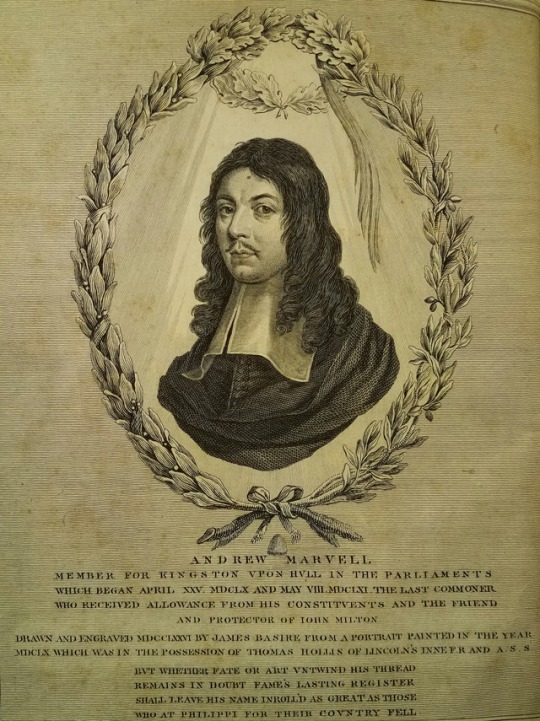
Andrew Marvell (31 March 1621 – 16 August 1678)
English metaphysical poet, satirist and politician who sat in the House of Commons at various times between 1659 and 1678. During the Commonwealth period he was a colleague and friend of John Milton. (Wikipedia)
From our stacks: Frontispiece “Andrew Marvell Member for Kingston upon Hull in the Parliaments which began April XXV, MDCLX and May VIII, MDCLXI. The last commoner who received allowance from his constituents and the friend and protector of John Milton. Drawn and engraved MDCCLXXVI by James Basire from a portrait painted in the year MDCLX which was in the possession of Thomas Hollis of Lincoln’s Inne F.R. and A.S.S. But whether fate or art untwind his thread remains in doubt fame’s lasting register shall leave his name inroll’d as great as those who at Philippi for their country fell.” from The Works of Andrew Marvell, Esq. Poetical, Controversial, and Political, containing Many Original Letters, Poems, and Tracts, never before printed, with a new life of the author, By Capt. Edward Thompson. In Three Volumes. Vol. I. London: Printed for the Editor, by Henry Baldwin, 1776.
#andrew marvell#poet#1776#books#literature#english literature#old books#book#old book#18th century#18th century book#18th century books#marvell#john milton#james basire#typography#engraving#engravings#illustration#book illustration#library book#library books#poets#writer#writers#author#authors#english writer#english writers#english lit
22 notes
·
View notes
Text

Detail of the Cowdray House Engraving showing the sinking of the English warship Mary Rose on 19 July 1545 during the French raid in the Battle of Solent. Above her the warship Henry Grâce à Dieu.

Based on an original painted between 1545 and 1548 for Sir Anthony Browne, Master of the Horse. The copy was made by James Basire 1778.
96 notes
·
View notes
Text
OC Master List and Introduction
Hello everyone! I’m Zelsisia but you can call me Zel, everyone else does. 😄 My pronouns are she/her and I’m an asexual and I’m hella nerdy and a theater kid. But my blog is mainly to gush about my OCs from a wide variety of fanfictions and video games and ttrpgs while reblogging posts I like. My main areas are Star Wars, Lord of the Rings, D&D, and many others. I like behind the scenes of movies and tv shows and plays.
I do write fanfictions I currently have two. One called The Lost Heir set in the SWTOR era of Star Wars. The other called Of Vod and Aru’ese that takes place in the Clone Wars era of Star Wars. Each following a set of OCs, all different but all fun and lovely!
Onto the OC Master List! Be warned it’s a bit long 😆:
Star Wars OCs
SWTOR:
1. Zelsisi Alleten
2. Tristan Alleten
3. Sehini
4. Tobani Ragnos
The Lost Heir OCs:
1. Ester Vallrian
2. Markus Vallrian
3. Roy Vallrian
4. Myasara Vallrian
5. James Cantor
Of Vod and Aru’ese OCs:
1. Marissa Tenau
2. Rachel Tenau
3. Denise Tenau
4. Lexi Tenau
5. Duke

6. Sly

7. Shredder

8. Tin

9. Joker
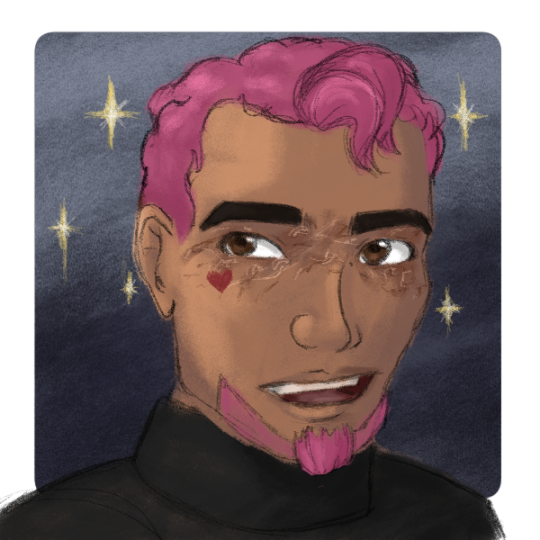
10. Ninja

11. Nox

12. Spark

13. Comp

14. Zeus

15. Gale

16. Aeol

17. Kess

18. Seth

19. Jaig

20. Marble

21. Seaweed
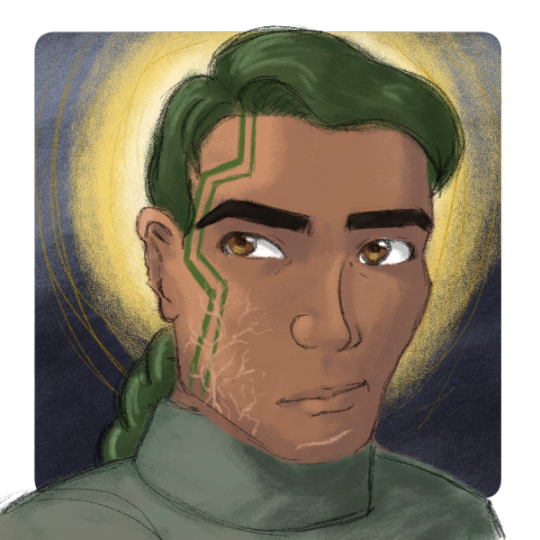
22. Neptunium
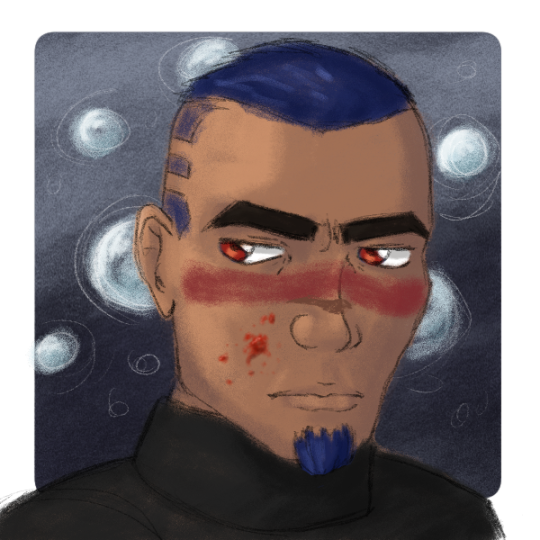
23. Viribus

Star Wars D&D:
1. Nefertiti Anke
2. Cyrene
3. Lilith
4. Marissa Tenau
5. Rachel Tenau
6. Denise Tenau
7. Lexi Tenau
8. Sehini Onath
10. Aguti'cas'iammeo (Cas)
D&D OCs
Original Elebor (First Game I ever DMed):
1. Kila Magicshield
2. Fila Majinaur (formerly Magicshield)
3. Thengel Magicshield
4. Saeros Magicshield
5. Marissa Crimson
6. Raven Leihall
7. Vylstine Viola
8. Venays Viola
9. Celebros
10. Gildor
11. I have more. A lot more. Player Characters will be added as I get player permission
Sequel Elebor (Sequel to Original and quickly approaching (I will be streaming it)):
1. Sebastian Magicshield
2. Aurora Magicshield
3. Edward Magicshield
4. Ian Eessil
5. Victor Viola
6. Vy Viola
7. I have more. A lot more. Player Characters will be added as I get player permission
DM PCs (Characters I play to help the party when I DM):
1. Persephone Natra
2. Victoria Alinet
3. Rena Krezi
Character’s I am or will be Playing:
1. Thyneros Hymn
2. Anduin Thurarsh

3. Azlin Kanasu
4. “Silver Fox”
5. Xenia Hynes
6. Ladon Fey
7. Jay
9. Nevon Kerak
10. Luna Veda Rivera
11. Minerva Basir
12. Atris Chazin
13. Mara Bronwen
14. Cassandra Tamsin (Bronwen)
15. Tondra Varsha
16. Althea Galen
17. Valis Entropy
18. Amos Kren ("Ghost")
19. Idris Azaria
20. Nathara Mereel (“Midnight”)
21. Trisrel Eilsatra
22. Pandora Frost (“Serpent”)
23. Nocta Luna
24. Arthur Harbin
25. Andrea Samson
26. Ashley “Ash” Smith
27. Astraea Vatir
28. Raiden Kenta
FFXIV OCs
1. Nocta Luna
2. Kila Magicshield
3. Fila Magicshield
4. Sebastian Magicshield
5. Nefertiti Anke
6. Aedwen Foster
7. Amasar
8. Astraea Vatir
9. I have more and can talk about them if you ask for one but those are my main ones
And that’s my introduction and my OC master list until I add more 😉
#introductory post#blog intro#my intro#my ocs#oc masterlist#I have a lot of ocs#and more will come#some are being developed#some are well established#ask me about them#at any time#I may take a bit to answer#I’m in college#homework#or projects#my fanfiction
14 notes
·
View notes
Photo

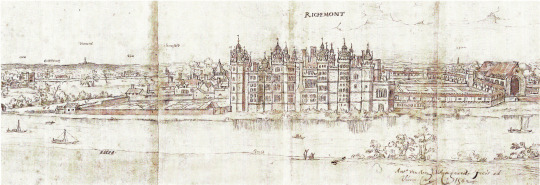

1. Photo of the Great Gatehouse of Richmond Palace at Richmond Green, London
2. Sketch of Richmond Palace by Antony van den Wyngaerde (1562)
3. Engraving by James Basire, “based on an ancient drawing” (1765)
In some circles, Henry VII has a reputation for being miserly, but several expenditures contradict this image, including his luxury items and his domestic building works. The Tudor royal residence that most strongly stated magnificence was Sheen Palace, which Henry VII renamed “Richmond” in honour of the earldom that he held when he won the crown at Bosworth Field. The original stone keep, with its stacked royal living quarters, stood apart as the heart of the complex. However, on 21 December 1498, as Henry VII’s family gathered for Christmas, a fire broke out that destroyed many of the buildings, along with untold valuable possessions.
Henry VII’s reconstruction, modelled after Burgundian architecture and employing many Burgundian artisans, largely followed the inward focus of medieval castles, with towers, turrets, crenellations, and a leaden roof. A magnificent great hall with an ornate hammer-beam ceiling – finished by 1501 and measuring 4000 sq. feet (1219 sq. metres) – formed the centrepiece of the new complex. Significantly, the palace also followed Burgundian innovations in the building material: brick. The expediency of brick construction and the standardisation that Henry VII imposed on its production enabled him to rebuild the palace in two years. Distinguishing the new construction from medieval buildings was not only the ornate brickwork, with complex mouldings and patterns, but also the profusion of large oriel windows filled with leaded glass panes – a highly visible sign of wealth. Richmond was the last such royal palace. Only a fraction of it now remains, including a brick gate emblazoned with Henry VII’s coat-of-arms of and some of the wardrobe buildings.
The most innovative feature of the palace included a stone, two-storey passageway that linked the Great Hall and the chapel. This enclosed, fenestrated gallery extended 200 feet long (24.4 metres), and successfully combined utilitarian and recreational uses with magnificence. From the north side, guests could watch jousts and other court events; on the south side, they could enjoy a fine view of the river Thames. The gallery also provided a pleasant place for exercise in inclement weather. Confirmation of Richmond’s exceptional magnificence exists from a guest at the wedding of Katherine of Aragon and Henry’s eldest son, Prince Arthur, who described Richmond’s “commodious” galleries with their many windows on each side of the court. Contemporary chroniclers also described the palace’s exotic gardens, fountains, sculptures, and tapestries, most notably a series depicting the Trojan War.
Henry VII and his son, Henry VIII, would replicate Richmond’s double-storey, multi-purpose galleries at other royal residences, such as Bridewell, Hampton Court, and Nonsuch. Although Richmond now represents the end of an era, the palace boasted all of the most up-to-date conveniences and innovations which set the trend for English palatial living for the next 30 years.
Source: Sara N. James, Art in England: The Saxons to the Tudors: 600-1600 (2016)
21 notes
·
View notes
Photo
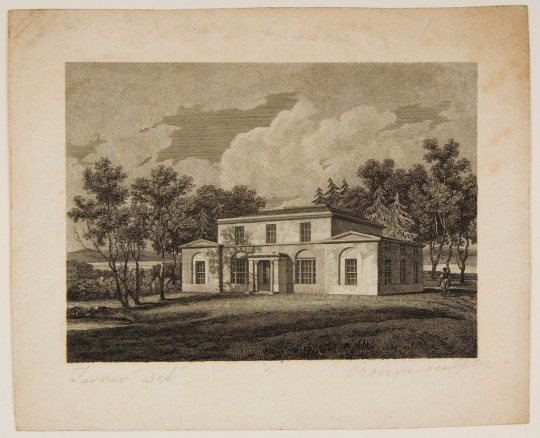
Mansion with Wooded Grounds, James Basire III, 19th century, Harvard Art Museums: Prints
Harvard Art Museums/Fogg Museum, Museum Collection
https://www.harvardartmuseums.org/collections/object/250927
2 notes
·
View notes
Photo








Science Saturday
THE DISCOVERY OF OXYGEN
This week we highlight the 18th-century discovery of oxygen by the English chemist, theologian, and political theorist Joseph Priestley as recorded in his Experiments and Observations on Different Kinds of Air, published in 6 volumes from 1774–86. We hold the first three volumes which were originally published in 1774, 1775, and 1777, respectively. Our three volumes are from various editions, however: Volume 1 is the corrected 3rd edition, 1781; Volume 2 is the 2nd edition, 1784; volume 3 is the 1st edition, 1777. All were published in London by the noted English publisher Joseph Johnson, who remained a close friend of Priestley’s for over 40 years until the latter’s death in 1804.
The “Kinds of Air” noted in the title refer to gases generally. In these volumes Priestley outlines the discovery of several gases: nitric oxide, anhydrous hydrochloric acid, ammonia, nitrous oxide, but most importantly oxygen, which he famously referred to as "dephlogisticated air," or a gas that has the theoretical substance phlogiston removed from it. Phlogiston was believed to be a fire-like element contained in all substances that could be burned, releasing the phlogiston in the air. This was the basis for the longstanding but erroneous phlogiston theory, which Priestley held to for the rest of his life. It appears that the French chemist Antoine Lavoisier and the Swedish pharmacist Carl Wilhelm Scheele, made independent discoveries of oxygen around the same time as Priestley. It was Lavoisier’s later experiments on oxygen in the 1780s that culminated in the overthrow of phlogiston theory and the establishment of modern chemistry.
The first three volumes of Priesley’s Experiments and Observations include four, fold-out plates of Priestley’s experimental instruments shown here:
The first two are from volume 1 and serve as the frontispiece and the final illustration at the back of the volume (that our former graduate intern Katie famously referred to as the “backispiece”). We show the original copperplate etchings along with reconstructed illustrations found at beautifulchemistry.net/priestley, and with a photorealistic CG reconstruction of plate one. Of plate one, beautifulchemistry notes:
The trough with a platform on one side was essential to [Priestley’s] experiments: collecting gases, transferring gases, and other experiments were all performed inside this trough. Priestley prepared many gases, including nitric oxide, nitrogen dioxide, carbon monoxide, carbon dioxide, nitrogen, oxygen, hydrogen, hydrogen chloride, ammonia, sulfur dioxide, some of which were first discovered by him. . . . For gases that dissolved in water, he used mercury to collect them. Priestley carefully studied the physical and chemical properties of many gases. He also discovered that plants could absorb carbon dioxide and release oxygen. However, he did not study the function of light in this process.
Of plate two, the same website notes:
Priestley improved [Stephen Hales’s] apparatus for preparing gas at high temperature. Through ingenious design, he studied reactions of gases under electrical spark. . . . In 1774, [Priestley] prepared oxygen by heating mercury oxide with a burning glass. He found that oxygen did not dissolve in water and it made combustion stronger. . . . He proposed that the intense combustion inside oxygen was due to oxygen contained no or very little phlogiston and it easily absorbed phlogiston from other substances. As a result, he called oxygen “dephlogisticated air” and nitrogen, which did not support combustion, “phlogisticated air.”
The next two etching are the frontispieces for volumes three and four, respectively, illustrating other equipment used in experiments to test different aspects of air and oxygen, and to produce oxygen from various reactions. These plates indicate that they were prepared by the British engraver James Basire.
View other Science Saturday posts.
#Science Saturday#science#scientific illustration#science experiments#Joseph Priestley#Experiments and Observations on Different Kinds of Air#oxygen#chemistry#Joseph Johnson#James Basire#laboratory equipment#phlogiston#dephlogisticated air#phlogiston theory#beautifulchemistry.net#Antoine Lavoisier#Carl Wilhelm Scheele#etchings#copperplate etchings#engravings
70 notes
·
View notes
Photo
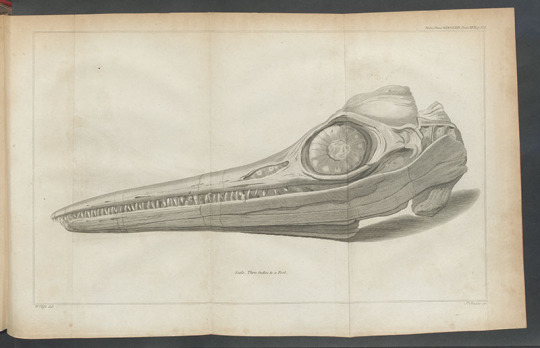

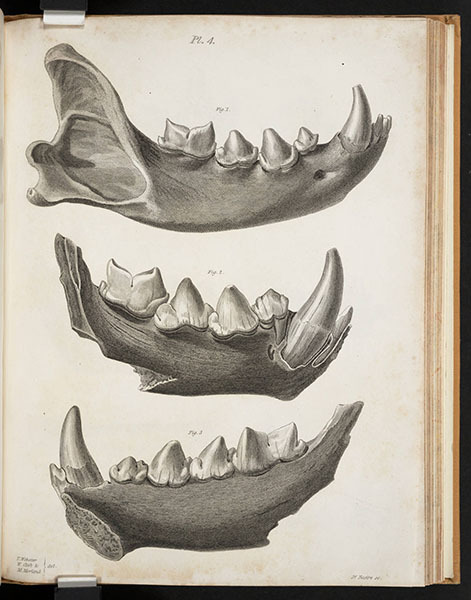


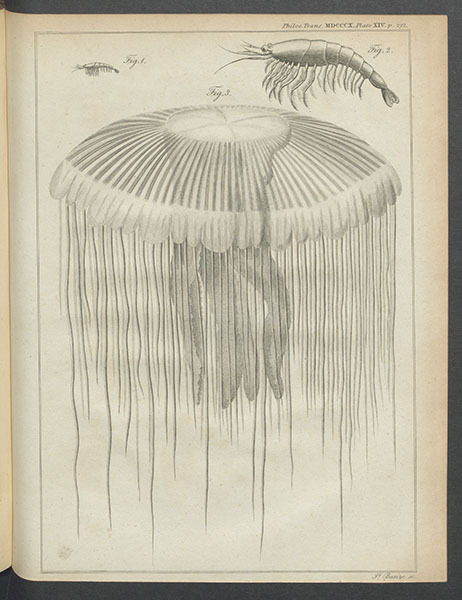


James Basire II – Scientist of the Day
James Basire II, an English engraver, was born Nov. 12, 2019.
read more...
#James Basire II#engraving#book illustration#histsci#histSTM#19th century#history of science#Ashworth#Scientist of the Day
52 notes
·
View notes
Photo

Submission Friday:
Paul Chisholm, “Our Injuries are Invisible ”, Seven Crutches, Hairbands, Dimensions Variable, 2017
Image credit James Basire
288 notes
·
View notes
Photo

24 August 1792. Two weeks earlier the monarchy had been overthrown. Within the last week, General Lafayette had defected, the Prussians had invaded, and the fortress town of Longwy had just fallen, though Paris did not yet know. In the midst of this ferment, the playwright Marie-Joseph Chénier led a delegation of Parisian citizens to the bar of the Assembly, petition in hand. He urged the deputies to offer full French citizenship to a list of “courageous philosophers who have sapped the foundations of tyranny.” The Legislative Assembly [...] took time for a hot debate of Chénier’s proposal. Two days later, eighteen foreigners – ranging from British abolitionist Thomas Clarkson to writer of the United States Constitution James Madison – were pronounced French citizens, with full political rights.
Certainly, this act was meant to play on the cosmopolitan stage of the Enlightened public sphere of Europe. But this granting of citizenship was not purely performative of honorary. Three of the adopted citizens – Tom Paine, the Prussian Anacharsis Cloots, and the Englishman Joseph Priestley – were soon elected as deputies to the new Convention, though only the first two would serve. The decree’s supporters made the politics clear: if the republic was to be universal, it must be a global creation from the outset; the National Convention would be, in Chénier’s words, “a congress of the whole world.” This idea immediately provoked the resistance and anxiety of some deputies. “You are delivering the Convention to foreigners!” exclaimed the deputy Claude Basire at one point mid-debate. And invasion by outsiders was not the only threat. Lasource warned that the Assembly should not give away this glorious title of French citizenship so lightly. To build a republic was a fragile and controversial act. “If you set about giving this tile to those who have not asked for it, wouldn’t you risk suffering the humiliation of refusal?” [...]
On one level, the events of 24-26 August 1792 – tied to a particular political moment – show how issues of foreigners and foreign policy became entangled with domestic policy [...]. One another, broader level, this event performs crucial ideological work for the new republic. [...] Historians have largely situated the origins of republican universalism in the Enlightenment discourse of natural rights. For the French revolutionaries, “universalism” meant that the legitimacy of the nation – the very sovereignty of the nation itself – rested on the defense of universal human rights and on guaranteeing equality before the law. While some scholars have stressed the exclusionary contradictions of this ideology, others have emphasized that it also enabled various groups of people to demand rights. Republican universalism had both exclusionary and liberationist potential, and the issue of inclusion/exclusion is clearly pivotal.
Foreigners, Cosmopolitanism, and French Revolutionary Universalism (S. Desan), in: The French Revolution in Global Perspective (edited by S. Desan, L. Hunt, W. M. Nelson).
51 notes
·
View notes
Photo
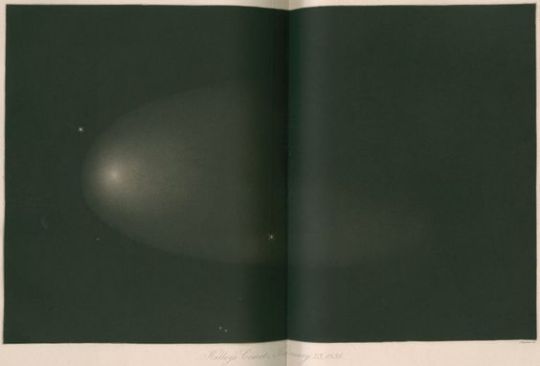
Halley's Comet, 23 February 1836 Artist:James Basire III
100 notes
·
View notes
Text
Omari Hardwick fights for his family and life in horror film ‘Spell‘
Considering the very real scares of 2020, it feels almost cathartic to be terrified by a horror movie like "Spell."The film arriving Friday stars Omari Hardwick as a high-powered lawyer stranded in backwoods Appalachia and Loretta Devine as the deceptively quaint old lady who holds him hostage. Wait, what? Devine is the villain? Hardwick understands the confusion, but he says the legendary actress from "Waiting to Exhale" and "Grey's Anatomy" enjoyed a switch from playing relatable, empathetic women."She had a ball, because, you know what? It's fun to play bad."That's Hardwick talking about his co-star, but he could be talking about himself. In February, AD: Autel maxisys elite. the handsome leading man wrapped a six-season run as an impressively complex bad guy, Ghost, a drug kingpin who is known in the legitimate business world is nightclub owner James St. Patrick, in the hit Starz series "Power."In "Spell," Hardwick is Marquis, a successful attorney who's still coming to terms with his humble beginnings and abusive father. When he finds out his dad has died, Marquis decides to pilot his personal small plane to the funeral, accompanied by his wife and two teenage children.A sudden storm causes the plan to crash. When Marquis awakens, he finds himself alone, battered and bruised in the attic of Devine's Ms. Eloise. She insists on nursing him back to health, arguing there is no hospital nearby. But her medicines consist of magic powders and a doll resembling him that she uses for her own evil purposes.Although Hardwick wasn't sure about tackling the horror genre, he thought about his love for classics like "The Shining" and "Silence of the Lambs" with its performance by Anthony Hopkins as Hannibal Lecter."When I read this script and when (director) Mark Tonderai spoke to me, I absolutely felt there was this psychological component," he recalls.Hardwick is drawn to roles that are as multi-layered as himself. A Georgia native, his early focus was athletics. At the University of Georgia, he was a standout player for the Bulldogs and became one of the college's All-Time George Football Letterman.When his NFL attempt was hampered by injury, he turned to acting, which he had studied at college. Hardwick paid his dues by working as a substitute teacher, security guard, Nordstrom shoe sales clerk and more and living in his car during a brief stretch as he waited for an acting break, according to Oprah magazine.Over time, Hardwick gained a foothold in TV and movies with parts in 2005's "Beauty Shop,"2008's "Miracle at St. Anna," 2010's "Kick-Ass" and two films with director Ava DuVernay, 2010's "I Will Follow" and the 2012 Sundance favorite "Middle of Nowhere."Updates on how the coronavirus is affecting your community and the nationHardwick continued to demonstrate his range in projects like the BET series "Being Mary Jane," where he was a cheating husband, the powerful, surreal 2018 statement on race and capitalism "Sorry to Bother You," which cast him as the eyepatch-wearing Mr. Blank and a well-reviewed 2018 indie "A Boy. A Girl. A Dream," where he was an idealistic filmmaker who falls into a possible romance with Meagan Good on the night of the 2016 presidential election."A Boy, A Girl. A Dream" was directed and co-written by Qasim Basir, who hails from Ann Arbor and is an alum of Detroit's Wayne State University. It's one of many connections Hardwick has forged with the Detroit area, which range from his childhood love for University of Michigan football to his admiration of Detroit Pistons great Joe Dumars.Hardwick spent a good chunk of time in Detroit for the filming of 2012's "Sparkle," the final big-screen appearance of Whitney Houston. During that time, he became friends with Dumars, whom he considers a mentor, and wrote poetry inspired by the city.The actor remains loyal to the city to this day. "Whenever someone would have me come to Det...
0 notes
